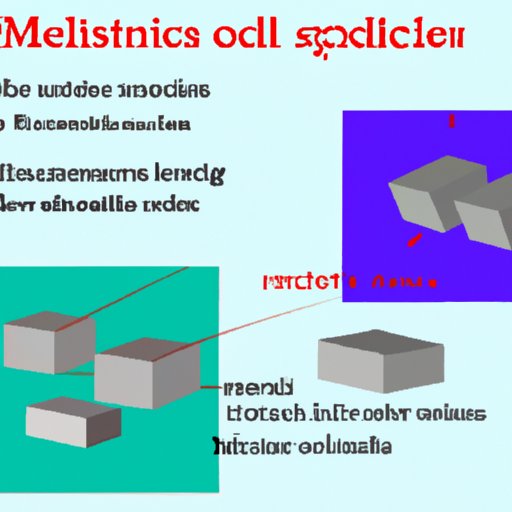Introduction
The term “solid” is used in many different fields of science. In general terms, a solid is defined as a material that has a relatively fixed shape and volume, and cannot be compressed or easily deformed. But what does solid mean in science? This article will explore the meaning of solid in science and how it is used in different areas of research.

Exploring the Meaning of Solids in Science
In science, solid matter can refer to both pure elements and compounds. Pure elements are substances that cannot be broken down into simpler substances and are made up of only one type of atom. Compounds, on the other hand, are made up of two or more different types of atoms. Both pure elements and compounds can exist in solid form.
To understand what solid means in science, it is important to look at the structure of solids and their associated scientific properties. Generally speaking, the structure of a solid is determined by the arrangement of its particles. Atoms, molecules, and ions are all examples of particles that make up solids. The way these particles are arranged determines the type of solid and its properties, such as its hardness, elasticity, and electrical conductivity.
How Do Solids Behave in Different Conditions?
The physical and chemical properties of a solid can change depending on the environment. For example, when exposed to extreme temperatures, some solids can become liquid or gas. Pressure can also affect the properties of a solid; for instance, some solids become softer or harder when exposed to high pressure.
Other external forces, such as electric and magnetic fields, can also alter the properties of a solid. For example, certain materials, such as ferromagnetic materials, become magnetized in the presence of a magnetic field. Similarly, certain solids become electrically charged when exposed to an electric field.
Solid State Physics: What it is and How it Relates to Science
Solid state physics is the branch of physics that studies the properties of solids. This field of study focuses on the behavior of electrons within solids, as well as the interactions between solids and other substances. It also looks at how solids respond to different external forces, such as temperature, pressure, and electric and magnetic fields.
Solid state physics is important for understanding the behavior of solids in different conditions. It helps scientists predict how solids will behave in various environments, which allows them to develop new materials with desired properties. This field of study is also essential for designing and improving products, such as computer chips and medical devices.

A Comprehensive Guide to Solid Matter in Science
Solid matter can come in a variety of forms, each of which has unique properties and characteristics. Some of the most common types of solids include crystals, metals, ceramics, polymers, and glasses. Each of these materials has distinct physical, chemical, and electrical properties that make them useful in different applications.
It is also important to understand how solids interact with other substances. When certain solids are exposed to liquids or gases, they can absorb or release energy, causing a change in their properties. This phenomenon is known as adsorption and can be used for a variety of purposes, such as purifying water or storing energy.

Understanding the Properties of Solids and their Role in Science
Solids are essential to many aspects of science, from everyday life to cutting-edge research. Many of the objects we encounter on a daily basis, such as furniture, electronics, and medical equipment, are made up of solids. Solids are also used in industries such as construction, manufacturing, and transportation, where strong and durable materials are needed.
Solids play an important role in scientific research as well. Scientists use solids to construct models and simulations to better understand complex phenomena. Solid state physics is essential for developing new materials with desired properties. And, of course, solids are essential for studying the structure and behavior of matter at the atomic and molecular level.
Conclusion
In this article, we explored what solid means in science and discussed its various forms, properties, and roles. We discussed the different types of solids and their associated scientific properties, as well as the behavior of solids in different conditions. We also looked at solid state physics and its importance in understanding solids. Finally, we examined the properties of solids and their significance in science.
Solids are essential components of many aspects of science, from everyday life to cutting-edge research. Their properties make them invaluable in a variety of applications, from constructing buildings to developing new materials. Understanding the behavior of solids and their roles in science is essential for making advances in the field.
(Note: Is this article not meeting your expectations? Do you have knowledge or insights to share? Unlock new opportunities and expand your reach by joining our authors team. Click Registration to join us and share your expertise with our readers.)
